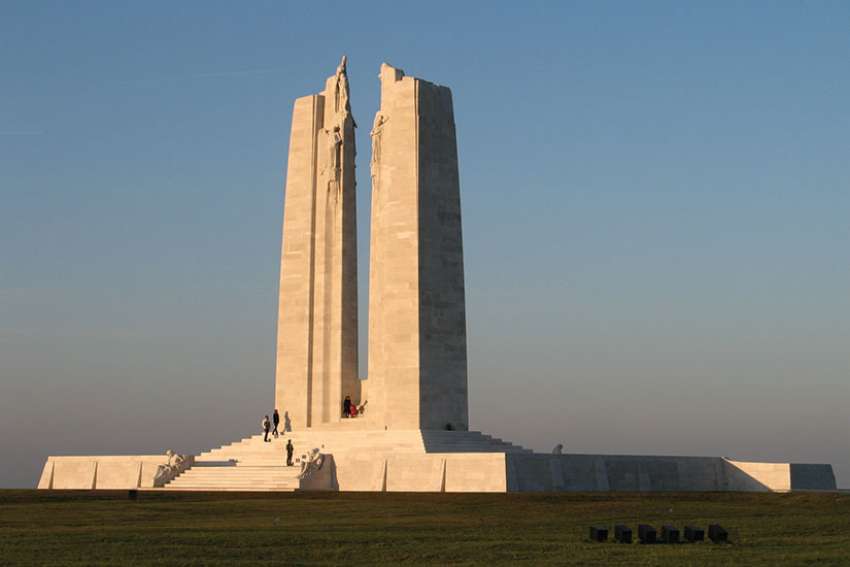The Dominion of Canada came into existence as a legal reality on July 1, 1867. A new country had been established. But the passage of a law does not an identity create, or a nation fashion. Canada existed by decree of the imperial Parliament in London, but did Canadians exist, too?
It is generally agreed that Canada “came of age” — became a real country one might say — in the Great War. At the outset of the war in 1914, Canada went to war when Britain did, and because Britain did. The decision, even if enthusiastically supported across the Dominion — or at least, the English-speaking parts — was not a homegrown one.
During the course of the war, Canadians demonstrated by their bravery in battle and their spirit of sacrifice that they were willing to fight and die not only as members of the British Empire, but as loyal sons of Canada. The symbolic figures of the Great War — think of Georges Vanier and Billy Bishop — would become authentic Canadian heroes. The issue of conscription would in fact make the First World War something most distinctively Canadian in that it provoked a genuine English-French unity crisis.
The battles consecrated the new country, those gruesome battles which claimed casualties so vast that even today it is hard to comprehend. Vimy Ridge is the most symbolic of those battles; hence the commemoration of its centenary last April in France and the banners that flutter along Sussex Drive in Ottawa.
It was at Vimy Ridge that the blood was shed to ratify the compacts of 1867. The blood of the fallen consecrated the legal work of 50 years earlier. Canada became Canada, not by a bill of Parliament alone, but by blood poured out. A price has to be paid and the price for the most valuable things is high.
No one put it better than Abraham Lincoln at Gettysburg. The question of the Civil War, Lincoln argued, was whether a nation “conceived in liberty and dedicated to the proposition that all men are created equal” could endure. The words had been written, the promises made. But would they endure? Would they take flesh? Would they live?
At Gettysburg, Lincoln came to dedicate “a final resting place for those who here gave their lives that that nation might live.” But, he conceded, words alone are insufficient: “In a larger sense, we can not dedicate, we cannot consecrate, we cannot hallow this ground. The brave men, living and dead, who struggled here, have consecrated it, far above our poor power to add or detract.”
So it was true at Vimy. Canada 150 points back to Confederation, but Canada as a nation might be said to have had a second founding, or a founding in two parts, the second of which was Vimy.
All of which found its full biblical sense 36 hours before July 1, when I offered an evening Mass at the cathedral in Ottawa for the solemn feast of Sts. Peter and Paul. This is one of the those half-century anniversaries for the princes of the apostles; their martyrdom is traditionally dated to 67 AD. The 1,950th anniversary of their martyrdom reminds us that the new covenant in Christ Jesus too must be ratified, must be paid for, and paid for in blood.
Jesus Himself speaks of His blood as that of a new covenant (cf. Matthew 26:28). The necessary blood shed for the covenant has already been done by Jesus on the Cross. Yet it remains necessary for us to be incorporated into that new covenant.
In the Old Testament, the people joined the covenant when Moses sprinkled the blood of the sacrifice upon them. For us, in Holy Communion we receive the Body, Blood, Soul and Divinity of Jesus — a more profound communion than mere sprinkling.
But some are given to participate in ratifying the covenant by shedding their own blood as martyrs. Not every disciple needs be a martyr, but we might say that the Church needs some martyrs to ratify the covenant. Peter and Paul are not the first martyrs, but their witness was the greatest of the early Church.
We might then think of 67 and 1917 as years of ratification of covenants contracted earlier. For the endurance of the nation, for the life of the Church, the blood needs to be shed, the price paid. That’s why we look back, not just to the time of Jesus, or to 1867, but to the martyred apostles in Rome and the fallen at Vimy.
(Fr. de Souza is the editor-in-chief of Convivium.ca and a pastor in the Archdiocese of Kingston.)

